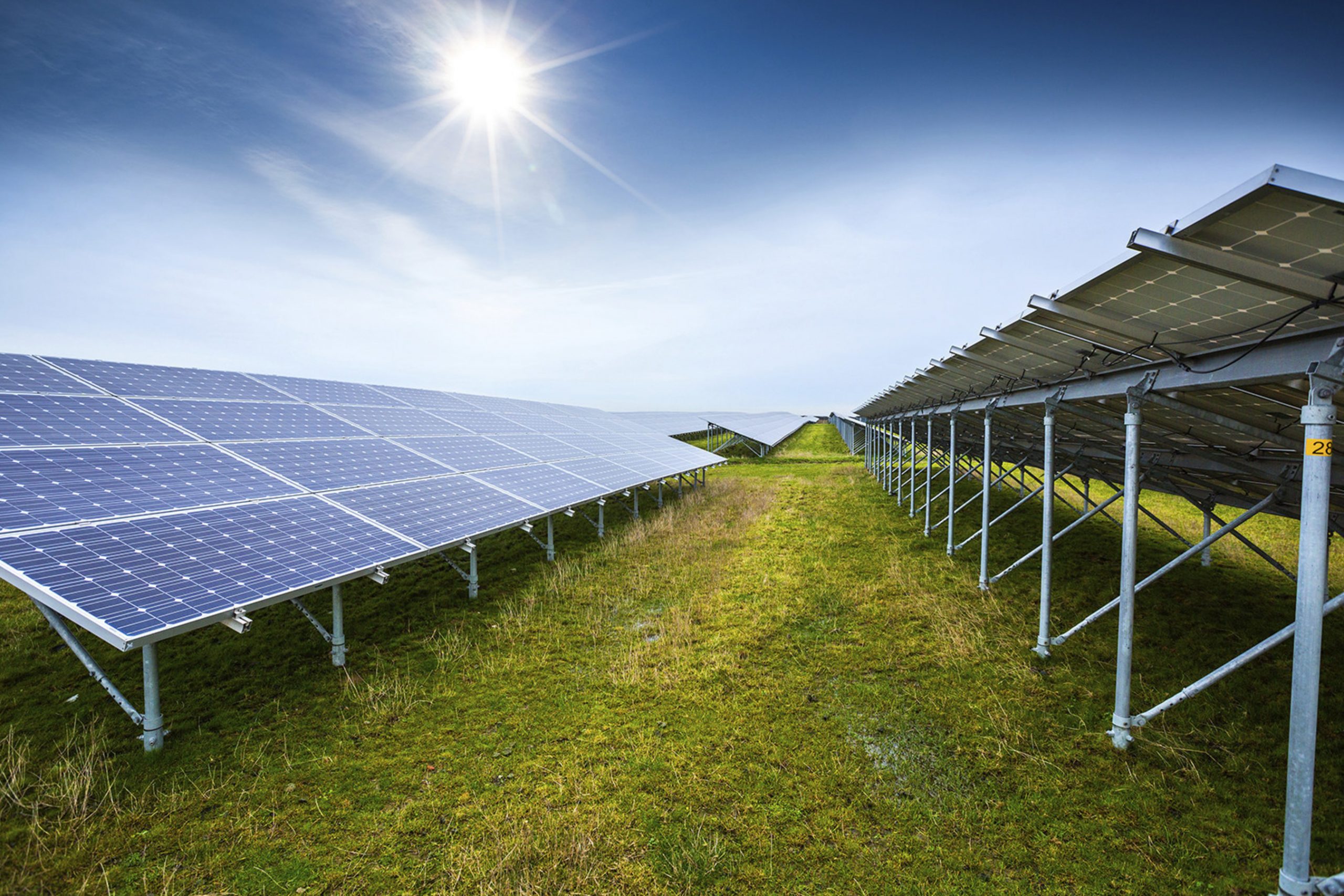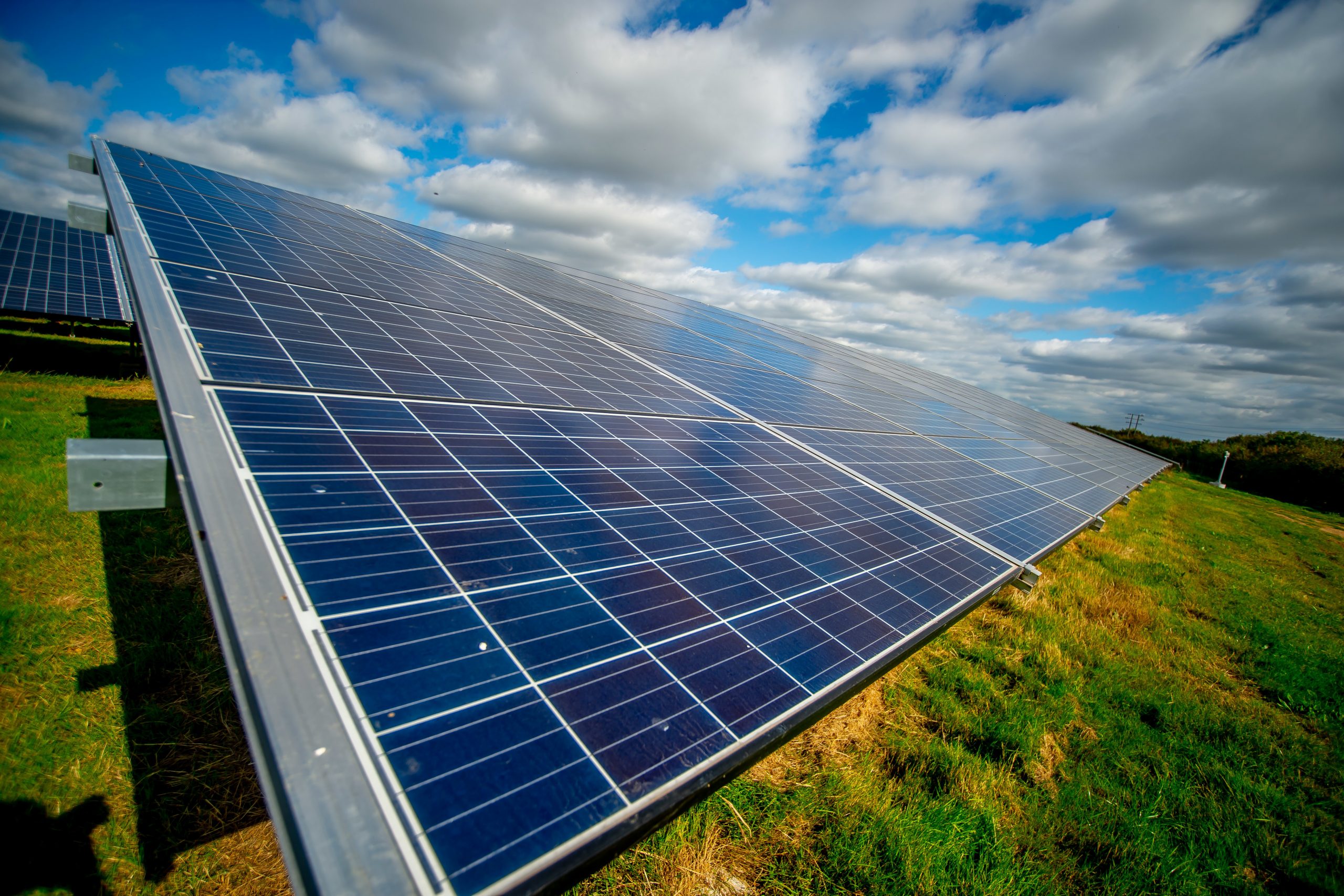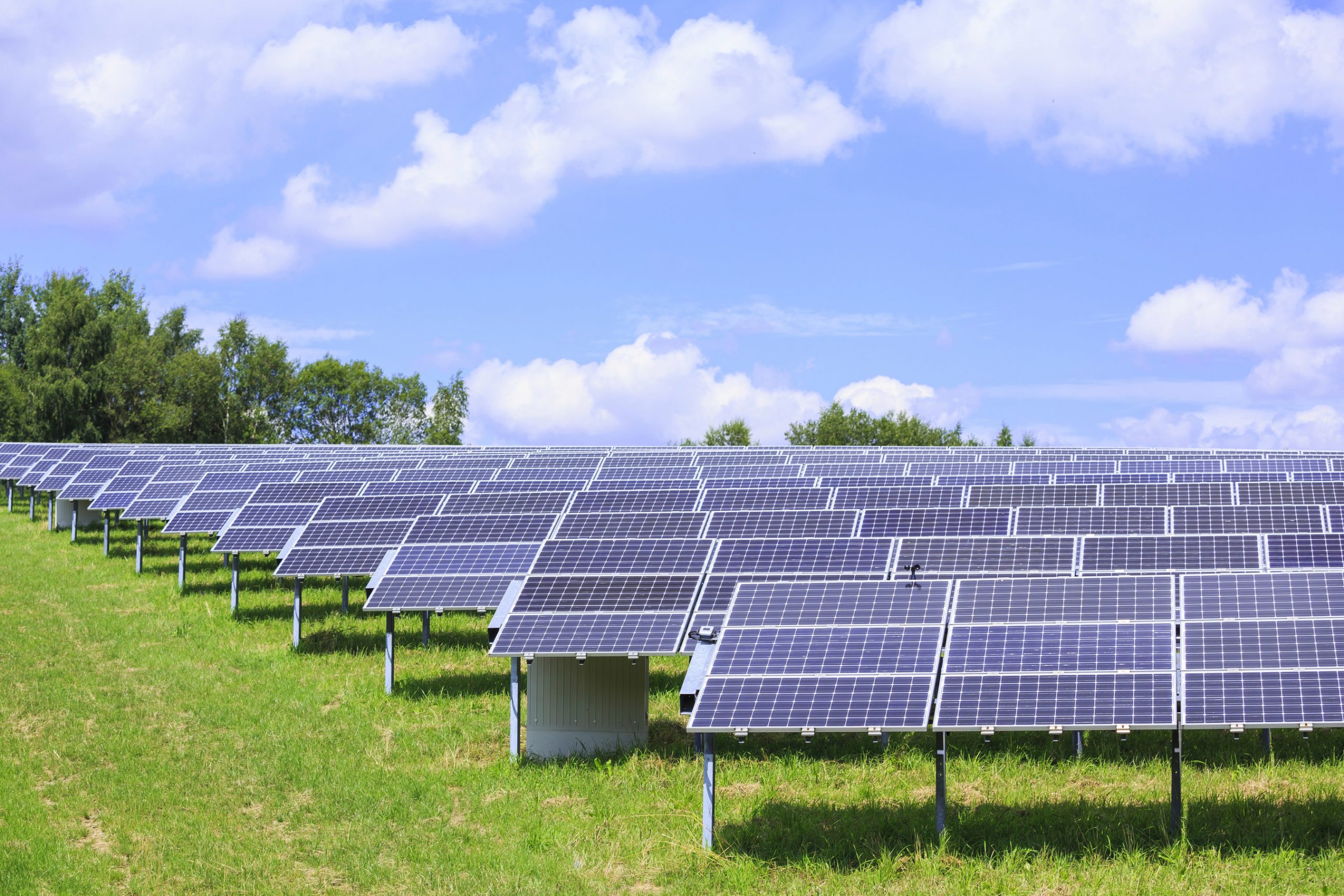Pattern Energy Group $262 Billion
Pattern Energy Group is a clean energy company that owns and operates power projects in the US, Canada and Chile. They sell any output to power and utility companies in fixed-price purchase agreements.
However, as of June 2019, Pattern Energy had cash and cash equivalents of $124 million compared with $101 million in December 2018. PEGI is in the middle of what is calls a building period although it expects slow dividend growth in the short term, it hopes that by 2020 it will see a 10% annual growth rate in dividends. This is up from an estimate of 5% for 2019.
Solar For New York Farmers
Average System Size: 77.32 kW
Average Annual Production: 88,272 kWh
Average Electricity Usage Coverage: 81.89%
Whats the Average ROI of Solar for New York Farmers? Solar systems will earn New York farmers, on average, a 19.4% ROI.
What the Average Payback of Solar for New York Farmers? So far in 2019, the average farm will pay off its solar system in 5.0 years, leaving decades in the solar systems 30+ year lifespan to produce free electricity.
Whats the Environmental Impact? Each year, the average system will offset 1,598 trees, 69 tons of CO2, or 145 barrels of oil.
Lease Your Land To A Solar Farm
It is the most secure and straightforward way of investing in the solar sector. You are not putting your physical money into the business instead, you are just leasing your land for making a solar farm. If a company is looking to invest in solar farms, you can offer your property for this purpose.
However, before contacting a company, you need to analyze whether your land fulfills the criteria for solar installations. For this purpose, you can take help for an independent site assessment company. This will also allow you to ascertain how much revenue you can generate by leasing your land to a solar power company.
If your land passes the assessment test and has been approved for solar panel installations, the next step is to look for a solar developer. Usually, these solar developers or financing companies provide all types of assistance when making a solar farm.
In fact, you are not making a solar farm but providing the land for solar installations. Hence, there is nothing much for you to lose when leasing your place to a solar company. Instead, this allows you to earn a lucrative amount of income monthly.
The solar company will build each structure with your approval. The operation and maintenance of such a solar farm will be the responsibility of the operating company. Furthermore, solar developers will obtain all the permits and meet the regulations for building a solar farm.
Also Check: Which Is Better Wind Or Solar Power
Solar Megawatts Per Acre Of Land
Referring to the number of megawatts which can be produced on each acre of land. As always, the calculation depends on the efficiency and effectiveness of the solar panels installed, and the availability of sunlight in the area. The calculation of the space needed is also influenced by the efficiency of the solar panels and the efficiency of the technology. If, as discussed above, a 1MW solar farm requires on average 4.5 acres of land, then each acre would produce 0.222MWh of electricity per year.
New Jersey And New York

Much like the previous states, New Jersey and New York offer a fairly high ROI, with an average of a six year payback period. New Jersey in particular has one of the top solar policy incentive programs in the U.S.
Like RI and MA, NJ and NY have some of the highest electricity usage and costs in the country thanks to cold winter temperatures and hot summers. Plus, property and sales tax exemptions are high in these states.
You May Like: How To Get Free Solar Panels In Ny
Terraform Power $354 Billion
TerraForm Power was created in 2014 by SunEdison, a holding company for wind and solar farms. The company held its initial public offering on 18 July 2014 but had negative growth initially with shares falling from a high of $42.03 to $7.26 just three months after the IPO.
Brookfield Asset Management, parent company of BEP, eventually bought a majority stake in TERP in March 2017. When the news of the acquisition hit markets, shares of TERP increased from $11.60 on 6 March to $12.62 just three days later. This was based on hopes that Brookfield had created a strategy that would boost the companys revenues.
In 2018, Brookfield increased its stake from 51% to 65% and, in 2019, TERP announced it had successfully cut its net loss to $17 million from $28 million. The company is taking a long-term outlook on its growth, but its balance sheet is still loaded with debt. However, TerraForm is said to be on target to repay its debt and grow its revenue by 2021.
Solar Farm Revenue Per Acre
Referring to the revenue generated by the entire solar farm, divided by the number of acres on the farm. As discussed, revenue depends largely on the initial investment costs, the electricity prices at which the energy generated it sold to consumers, and available incentives, credits, and tax breaks.
You May Like: How To Pigeon Proof Solar Panels
The Largest Solar Farm In The World
As of July 2020, the largest solar farm in the world is Bhadla Solar Park in Rajasthan desert region of India.
The solar farm covers a mammoth 10,000 acres. It has an energy generating capacity of 2,245 MW, or 2.2 gigawatts. It is nearly four times the capacity of Americas current biggest solar farm, Solar Star.
The 2.2 GW Bhadla Solar Park is on the fringes of the Thar Desert in India temperatures there go up to 126 degrees Fahrenheit.
The Advantages Of Floating Solar Panels
Environmental Benefits of Solar Energy
It is a known fact that solar energy has significant environmental benefits, and floating solar panels will undoubtedly contribute to those benefits. The water in floating solar panel installations doesn’t only cool the solar-powered systems, but it also works the other way. The floating solar panel installation gives shade to the water body and minimizes evaporation in ponds, reservoirs, and lakes. Water loss due to evaporation can mount up over time and lead to a shortage. Therefore this is a significant environmental benefit of solar energy in locations that are more susceptible to droughts.
The shade provided by the floating solar panels may aid in the reduction of algae blooms in freshwater. Algae can be hazardous to human health if found in a source of drinking water, and it can also cause the death of aquatic plants and animals.
No Loss of Valuable Land Space
Increased Efficiency of a Solar Panel
You May Like: Does Solar Really Pay For Itself
The 3 Most Profitable Places To Invest In A Solar Farm
Solar farms can be beneficial no matter where theyre built, but there are certain areas where they tend to be more profitable.
Some of the factors that contribute to profitability are how much the state values solar power, tax incentives, and the feasibility of the land and environment for building a solar farm.
Here are the top places to consider investing in a solar farm:
Top 7 Tips For Farmers About Solar Farm Leases
While there are several economic advantages to farmers when leasing their land after meeting the solar farm land requirements for solar projects, its important to guard against the risks you may encounter.
When beginning the process, in most cases, you wont ever need to fill out applications and actively recruit a solar developer, assuming you satisfy the solar farm land requirements. They will come looking for you!
There is a huge demand for solar energy but not enough land to situate all the PV modules on. Your land is a precious commodity to solar developers. They have much to gain from you and want you to sign on with them.
Unfortunately, if you dont take all the necessary precautions, you could literally lose everything.
Here are the top 7 tips for farmers about solar farm leases to keep yourself in a good financial position from start to finish.
Also Check: How To Clean Solo Stove Yukon
Solar For Virginia Farmers
Average System Size: 56.51 kW
Average Annual Production: 62,960 kWh
Average Electricity Usage Coverage: 90.42%
Whats the Average ROI of Solar for Virginia Farmers? Virginia farms can earn an average of 12.55% ROI on their solar investment.
What the Average Payback of Solar for Virginia Farmers? In just ten years, the average Virginia farm will have paid for its solar system with the money saved from their solar system.
Whats the Environmental Impact? Each year, the average system will offset 1,140 trees, 49 tons of CO2, or 103 barrels of oil.
How Much Money Can You Make With A Solar Farm

In terms of revenue, you can earn in the ballpark of $40,000 per year by selling the electricity from a 1 MW solar farm.
Heres an explanation of how solar farms generate revenue.
Utility-scale solar farms sell their power by entering Purchase-Power Agreements for their generation on the wholesale electricity market. This can be done using electricity marketplaces such as LevelTen Energy.
According to LevelTen Energys P25 index, in Q4 2019, solar power traded at $27.40 per MWh. .
Based on the national average of four peak sun hours per day, we know that the average 1 MW solar farm would make 1,460 MWh per year. That means that the average 1 MW solar farm can expect an annual revenue of roughly $40,000 per year.
These, of course, are just average figures, and will vary based on factors such as solar power production in your area and the going rate for solar generation in the wholesale market.
Moreover, do note that there are wide variations in PPA values based on the wholesale electricity prices in your Regional Transmission Organization area.
Don’t Miss: Do I Need To Register My Sole Proprietorship
Conduct Market Research And Feasibility Studies
- Demographics and Psychographics
The services of a solar farm will be needed by the following
ECONOMIC ANALYSIS
If you are keeping tabs of happenings in the Solar Farm Developers industry, you will agree that the demand for construction of utility-scale solar power projects has skyrocketed many thanks to substantial government support. So also, technological advancements in solar panel construction will lead to a greater supply of low-cost panels, making solar panels more accessible for individual consumers, also lowering demand.
Another trend is that the Solar Farm Developers industry has galloped ahead in recent years as a result of the rapid technological developments in our world, falling solar panel costs and favorable government policy. In the coming years, demand for solar panel installation is projected to continue growing.
Ongoing government assistance and aid in the form of tax credits and rebates, along with technological advancement and research in solar energy, as well as the rising popularity of solar power purchase agreements, will assist to help revenue grow sharply going forward.
Solar Farm Cost Per Acre
Referring to the cost of establishing a solar farm, divided by the number of acres the farm will cover. Given a 1MW solar farm costs on average at least $1,000,000 and requires about 4.5 acres, but may cost up to $2,500,000, then for a 1MW farm the cost per acre would range from roughly $222,000 to $500,000.
You May Like: What Can You Run Off Solar Panels
Now Is The Time To Invest In Solar Markets
Solar technology has never been more affordable or efficient. The solar panels of today capture more of the suns energy than ever before, and their operational lifetime is between 25 and 30 years from installation.
Depending on your location and financial situation, you can apply for solar energy grants and take advantage of solar tax incentives. The current federal solar tax credit is set to shrink with every passing year. Without an extension, this growing reduction puts a ticking clock on your financial opportunity.
What You Need To Know About The Solar Energy Industry
Global energy demand is growing, but so is the reluctance to invest in energy sources that damage the environment and contribute to climate change. This is why investment has grown in areas of sustainable energy, such as solar, wind, hydroelectricity and tidal. The solar energy industry has grown at a rapid rate since 2010, increasing by approximately 150% by 2018 from 100,000 workers to 243,000. The industry is expected to grow at a compound annual rate of 14.9% until 2023, at which point it will have an estimated worth of $286.3 billion.1
According to the US Energy Information Administration, non-hydro renewable energies mainly wind and solar made up 10% of US electricity sources in 2018 but will increase to 12% by 2020. The solar sector works in what is known as a feast and famine cycle. The fluctuations in growth stem from the capacity of companies to supply materials, as well as the demand from consumers both of which can change from year to year.2
While many US companies came out in favour of the tariffs, there was a large amount of criticism as some believed they would lead to job losses and uncertainty about the renewable energys future. However, the solar energy industry has still grown by approximately 7% in 2019, up to a workforce of 259,400.3
You May Like: Will An Emp Destroy Solar Panels
What Is A Solar Farm And What Are The Different Types Of Solar Farms
Solar farms, also known as solar parks, solar plants or solar power stations are essentially a giant collection of ground-mounted solar installations that harness sunlight and generate electricity. The electricity produced can then be fed into the electricity grid.
There are two ways solar farms can collect sunlight to generate electricity:
1. Solar PV cells: These are solar panels that absorb sunlight and generate electricity directly.
2. Solar Concentrators: This method uses troughs that reflect and concentrate the sunlight on a point to warm a heat transfer fluid. This fluid is pumped into a thermal engine that converts the heat into electricity.
The first method are more popularly used in solar farms.
Now, let’s turn to the two main types of solar farms that are out there.
Release The Proposals To Individuals And Firms
Several individuals or firms may inquire about the terms of service while the construction is ongoing. Once the solar farm structure is wholly constructed, you could contact industries, firms, and individuals and discuss the services you offer.
Aside from these, its crucial to tackle the service costs and payment options of utilizing your solar farm business power.
You May Like: How Many Kw Solar Power Do I Need
Solar Farm Acres Per Megawatt
Referring to the number of acres required to produce 1MW of solar electricity. Calculating the acreage per megawatt must take into consideration all of the equipment which shall consume space on the farm: primarily the panels and the structural components . Typically, a 1MW solar power plant installation will require around 4-5 acres, assuming that every kilowatt of solar electricity production will require about 100 square feet of space.
Potential Gains And Profitability Of Solar Farms

Here we will look at existing plants to determine the approximate solar farm income per acre.
Pavagada Solar Park is the largest solar farm in the world, with a 13,000-acre area. It produces about 2,050 MW each year. The companies it sells to save $1.7 million per hour or about $7.4 billion a year from a 12-hour day.
Many farmers in the United Kingdom have begun converting their infertile soil into solar farms. While the UK is not known for its sunny weather, plenty of people have profited from selling solar electricity.
For instance, Mandy Wilson has a 30-acre solar farm. She earns about £30,000 each year on rent from the panels.
Your solar farm profit per acre will vary based on the size and efficiency of your array. How much money does a solar farm make? On average, you might profit around $21,250-$42,500 per acre.
Other potential gains from operating a solar farm include:
- Guaranteed steady income from a solar land lease throughout the term, which is usually 20-25 years
- Benefitting residents with new tax revenue because the local government can direct the funds to improve community services
- Improved air quality, reduced pollution, and fewer harmful emissions compared to nonrenewable energy
See Related: Best Environmental Stocks to Invest in Today
Don’t Miss: How Much Does Solar Installer Make
How Much Investment Is Necessary To Build A Solar Farm
The power generation capacity of a large-scale solar farm is at least 1 megawatt . This capacity is equal to that of a power plant, which is capable of offering a constant supply of electricity to almost 200 households.
The cost of building a solar farm largely depends on different factors, including available space and sunlight hours. The cost of a utility-scale solar farm is something around $1/watt. Hence, you can easily calculate that to build a 1 MW solar farm, you have to invest approximately $1 million.
The cost of the residential or community solar farm is relatively higher, which stands at $3 to $4 per watt.
The reason for this difference is the fact that while building a large-scale solar farm, you buy solar panels and other equipment in bulk, which lowers their price to a great extent.
